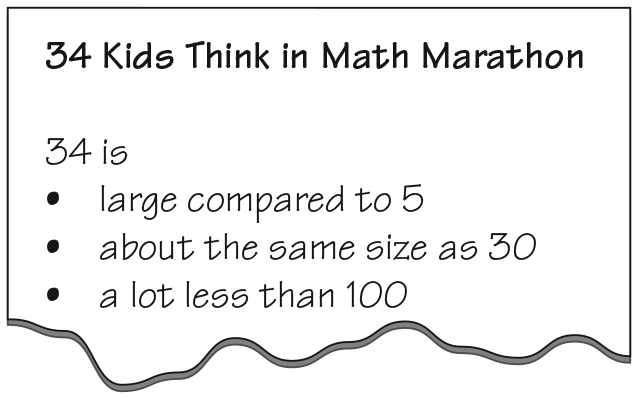|
|
Daily Practice and Problems |
Lesson |
Homework |
Assessment |
Student Book |
Student Activity Book |
|
|
|
|
Teacher Resources |
Teacher Guide - digital |
|
|
|
|
Supplies for Student Pairs
construction paper, 12 in. x 18 in. with headline. See Materials Preparation.
desk number line (0–40)
Materials for the Teacher
Display of 100 Chart (Student Activity Book) Reference
Unit 10 Assessment Record
Comparison Symbol Chart from Unit 8 Lesson 5
glue or tape
scissors
chart paper for two charts. See Materials Preparation.
class number line (0–130)
Materials Preparation
Prepare Newspaper Headlines on Construction Paper. You will need one headline containing two-digit
numbers for each pair of students. Find and cut out
several headlines from articles in periodicals. If you
prefer, cut out the headlines from 1–2 copies of the
Numbers in the News Master. Attach one headline to
the top of a 12" × 18" piece of construction paper.
Prepare Headline on Chart. Write the headline
"34 Kids Think in Math Marathon" at the top of a
piece of chart paper. See Figure 1.

Figure 1: Chart with headline
Prepare Comparative Statements on Chart. On a
second piece of chart paper, write a two-digit number
that has not yet been explored (e.g., 57). Write comparative
statements about this number. Include some
statements that are true and some that are false.
See examples about the number 57.
My Number is 57.
- This number is about the same size as 60.
- This number is between 50 and 60.
- This number is 7 more than 50.
- This number is 3 less than 60.
- This number is a lot less than 100.
- This number is large compared to 3.
- This number is 10 more than 47.
- This number is > 50.

















